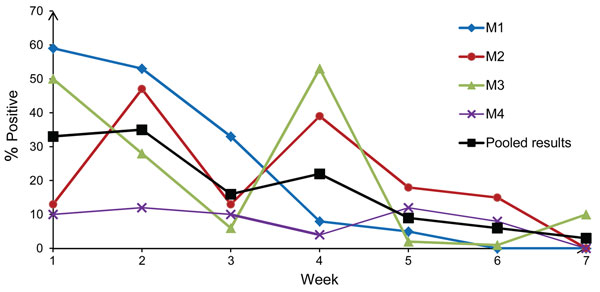Volume 19, Number 2—February 2013
Dispatch
Influenza A(H5N1) Virus Surveillance at Live Poultry Markets, Cambodia, 2011
Figure 1

Figure 1. . Prevalence of influenza A(H5N1) virus–positive environmental samples from live poultry markets, by collection week, during the Khmer New Year festival, Cambodia, 2011. The New Year festival occurred during week 4 of the study. M1, Orussey market (Phnom Penh); M2, Chamkar Doung market (Phnom Penh); M3, Takeo market (Takeo Province); M4, Kampong Cham market (Kampong Cham Province). Samples positive for the matrix, hemagglutinin 5, and neuraminidase 1 genes by quantitative real-time reverse transcription PCR were considered positive for subtype H5N1 virus. In rare instances, neuraminidase 1–negative samples that were positive for the matrix and hemagglutinin genes were considered positive for subtype H5N1 virus.
1These authors contributed equally to this article.